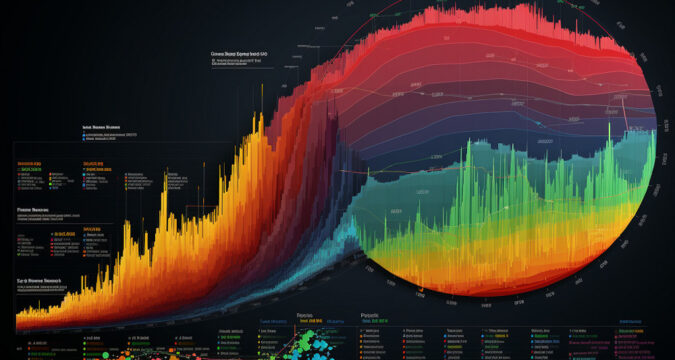
Crypto slippage is one of the most frequent difficulties in trading in the digital asset market. When this happens, traders face variations in trade prices (projected and actual).
This phenomenon affects all categories of investors, especially in volatile markets.
Understanding Crypto Slippage
This phenomenon occurs when the execution and projected trade costs differ. Low liquidity and market volatility are two reasons for this disparity. For example, rapid market swings could cause a greater or lower actual purchase price than expected if you try to buy Bitcoin at a designated price.
Causes of Slippage
Some of the leading causes of crypto slippage are discussed below.
Market Volatility
Fast price swings indicate that the market price can vary greatly before the trade occurs, leading to a different final cost.
Low Liquidity
In markets lacking enough liquidity, there won’t be enough buyers or sellers in the specified price range.
Order Size
Big orders can affect the market price, especially in less liquid marketplaces. Placing a sizable order could move the price when it is filled.
Network Congestion
Network congestion on decentralized exchanges (DEXs) can induce transaction delays, influencing the price throughout the processing period.
Positive vs. Negative Crypto Slippage
Positive slippage results from an estimated price higher than an execution cost. It would be evident, for instance, if you paid $59,800 for an asset you wanted for $60,000.
Negative slippage is the opposite. For instance, your anticipated purchase of $60,000 turns out to be $60,200.
Calculation Method
Slippage = (Executed Price – Expected Price) / Expected Price x 100.
For example, if a buyer ordered at $2300 but anticipated an ETH price of $2200:
Slippage = ($2300 – $2200) / $2200 x 100 = 4.55%
Centralized vs. Decentralized Exchanges
Notably, slippage differs between centralized exchanges (CEXs) and decentralized exchanges (DEXs).
CEXs
It usually results from market instability, exchange fees, and large orders. The exchange manages the situation, and fees might reflect these price adjustments.
DEXs
Slippage on DEXs can be affected by elements such as trade volume, network congestion, and liquidity pool size. Since this creates costs from enabling trades, it’s beneficial to liquidity providers.
How to Reduce Crypto Slippage
Use Limit Orders
Limit orders let you specify the price range you wish to buy or sell. This guarantees that your trade will be executed at the designated price or better. Limit orders give more control over the execution price than market orders, carried out at the current market value.
Choose High-Liquidity Cryptocurrencies
Trading in highly liquid marketplaces lowers crypto slippage risks. Since it shows enough buyers and sellers at various price levels, high liquidity helps trade execution close to the target cost. Notably, crypto assets like Bitcoin and Ethereum are more liquid than less-known altcoins.
Select the Right Trading Platform
Low trading fees and highly liquid platforms assist in reducing crypto slippages. Look at different exchanges to find ones with decreasing margins and consistent pricing.
Set Tolerance Levels
Many trading systems let you set a tolerance level. This value specifies the maximum variance you’re willing to accept.
Monitor Network Congestion
Network congestion often creates delays on most DEXs. A simple solution is using quicker layer-2 solutions or trading during off-peak hours.
Avoid Trading During Major News Events
Major market events can cause quick price swings. Steering clear of trades during these times will help protect your capital.
Break Up Large Trades
This technique works effectively in less liquid markets. Since big orders can affect market pricing, breaking them into smaller pieces lowers the possibility of a noticeable impact.
Selecting the Appropriate Tolerance
Choosing the right tolerance is vital. A lower tolerance (0.5%) reduces risks but may lead to unfilled orders in erratic markets. Higher tolerance (say 2%) increases the likelihood of order execution and raises the risk of a negative outcome. Your tolerance level should match the market environment and your risk appetite.
Practical Tips for Better Trade Execution
Avoid FOMO trading, especially in highly volatile conditions where slippage is nearly inevitable. Fear of missing out can lead to hasty decisions. Hence, sticking to your trading strategy will help avoid unnecessary risks.
Conclusion
Although crypto slippage is a natural aspect of trading the virtual asset market, you can safeguard their assets and control their transactions once you know the causes and use the appropriate techniques to reduce them. You will enjoy a better trading experience using high-liquidity platforms, market limit orders, and modifying your slippage tolerance setting.


